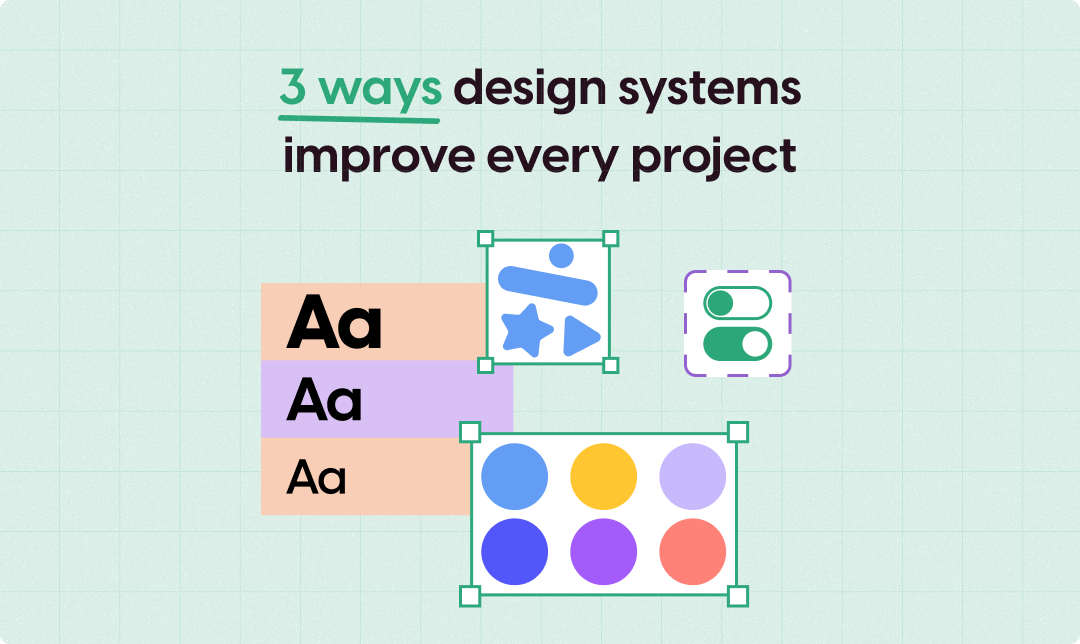
Daniel Chernashki
02 Jul
4 mins read
- Copy link
The power of design systems: unifying your brand's visual language

In today's digital landscape, consistency is king. Whether you're a startup or a well-established enterprise, maintaining a coherent visual identity across various platforms and media is crucial. This is where design systems come into play. They are the unsung heroes that ensure every user interaction with your brand feels seamless and professional.
What is a design system?
A design system is a collection of reusable components, guided by clear standards, that can be assembled to build any number of applications. It’s more than just a style guide; it's a living document that evolves with your brand. Think of it as the DNA of your brand's visual and experiential identity, encompassing everything from typography and color palettes to UI components and code snippets.
The core components of a design system
Style Guide: This includes the visual elements of your brand, such as color schemes, fonts, and imagery guidelines. It ensures that every piece of content adheres to the same aesthetic principles.
UI Components: Pre-designed elements like buttons, forms, and navigation bars that can be reused across different applications. These components save time and ensure consistency.
Pattern Library: A repository of design patterns that solve common usability problems. These patterns help maintain a user-friendly experience across all platforms.
Documentation: Detailed instructions and guidelines on how to implement the design system. This ensures that every team member, from designers to developers, is on the same page.
Benefits of implementing a design system
Consistency Across Platforms: A design system ensures that your brand looks and feels the same, whether on a website, mobile app, or printed material. This consistency builds trust and recognition among your audience.
Efficiency and Speed: With a library of pre-designed components, your team can move faster from concept to launch. There's no need to reinvent the wheel for every project.
Scalability: As your company grows, your design system can scale with you. Adding new features or expanding to new platforms becomes easier when you have a solid foundation.
Collaboration: A design system fosters better collaboration between designers and developers. With clear guidelines and reusable components, everyone can work more harmoniously and productively.
How to create an effective design system
Audit Your Current Design Assets: Start by gathering all existing design elements and assessing their effectiveness. Identify what works, what doesn’t, and where the inconsistencies lie.
Define Your Core Principles: What are the key values that your design should communicate? These principles will guide every decision in the creation of your design system.
Build a Modular System: Create reusable components that can be mixed and matched to build different applications. Ensure these components are flexible enough to adapt to various contexts.
Document Everything: Detailed documentation is crucial. It should cover how to use each component, the reasoning behind design decisions, and how to contribute to the system.
Foster a Culture of Continuous Improvement: A design system is never truly finished. Encourage your team to provide feedback and suggest improvements to keep it relevant and effective.
Real-world examples
Several companies have successfully implemented design systems, reaping significant benefits. For instance, Airbnb’s design system, called "Design Language System (DLS)," has streamlined their design process and ensured a cohesive user experience across all touchpoints. Similarly, Google’s Material Design has set a standard for intuitive and adaptable design, influencing countless applications and websites worldwide.
Conclusion
Investing in a design system is not just about creating a pretty interface; it's about building a cohesive, efficient, and scalable design practice that can grow with your brand. By implementing a well-crafted design system, you can ensure consistency, foster collaboration, and ultimately deliver a better user experience. In a world where first impressions matter, a design system is your secret weapon for making every interaction count.
Embrace the power of design systems, and watch your brand transform into a paragon of visual and functional consistency.